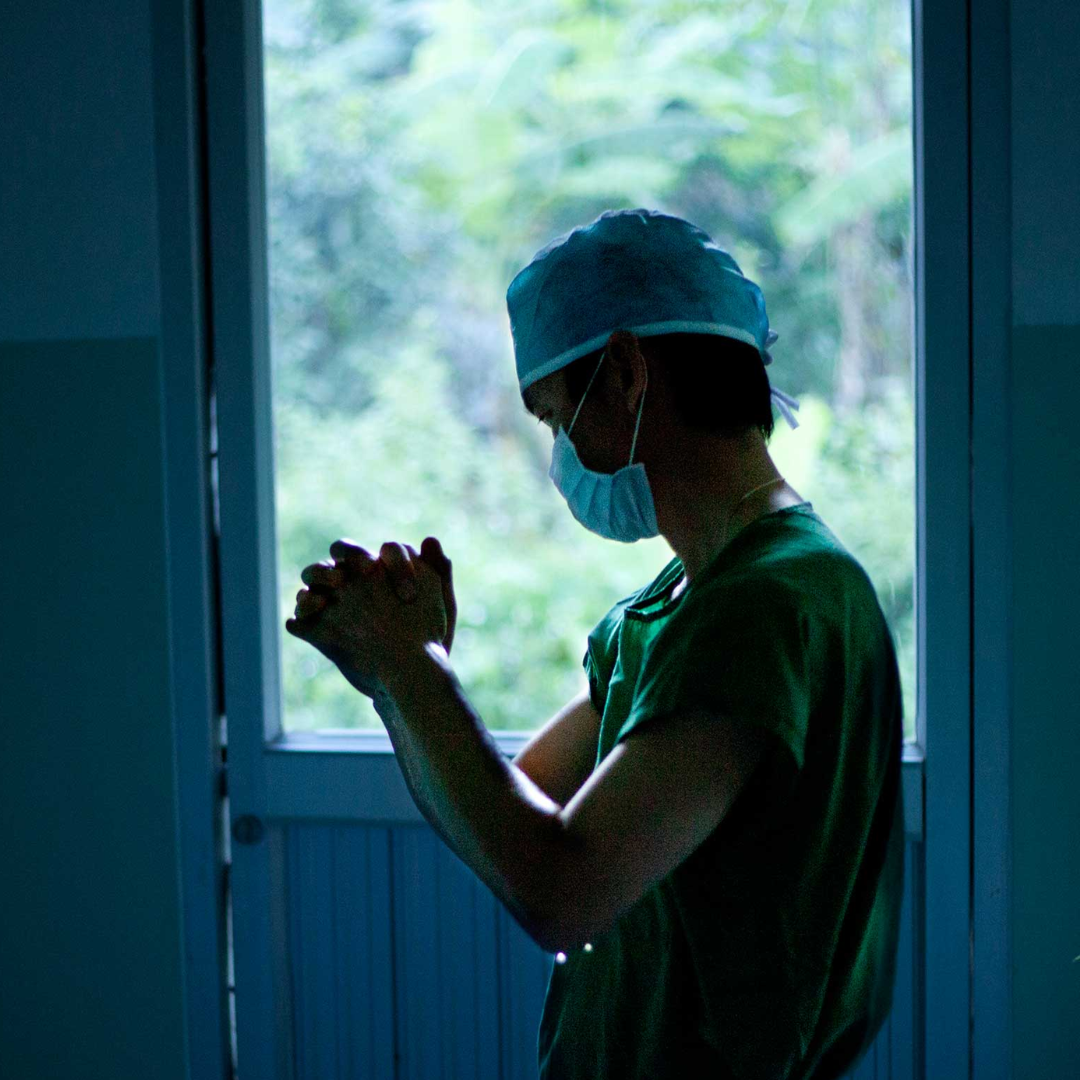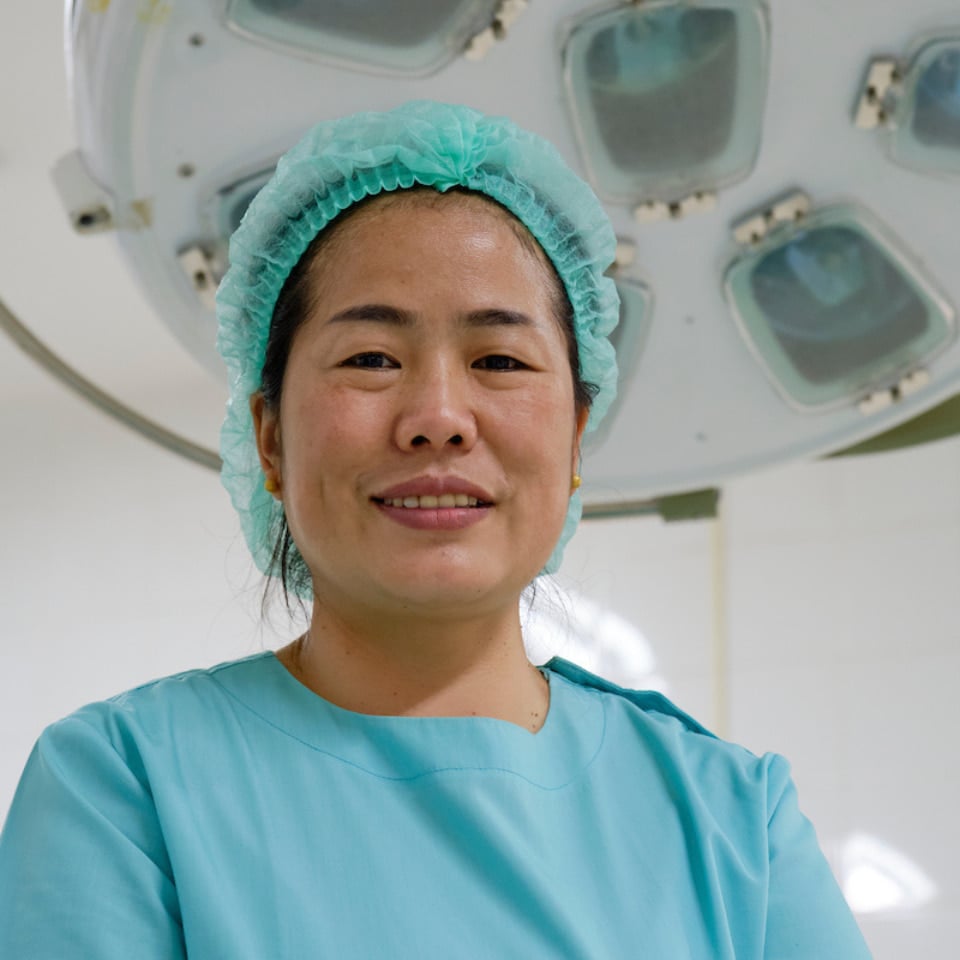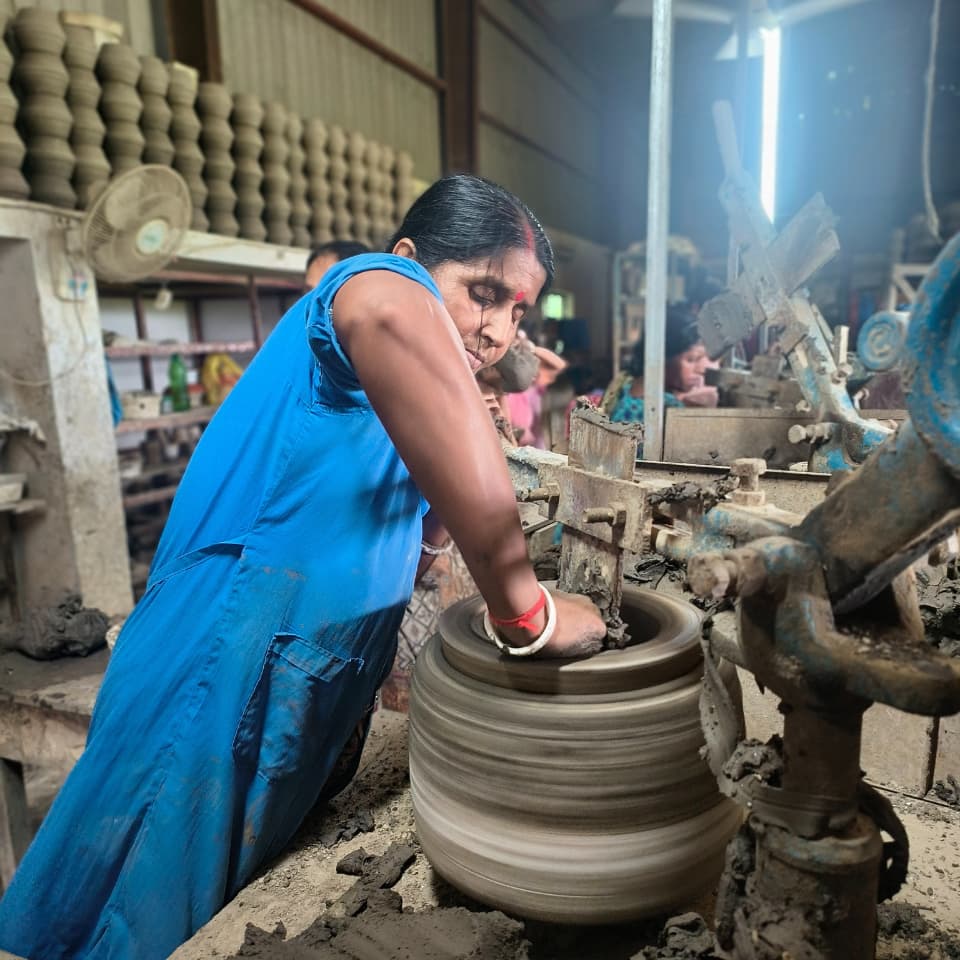Hong Kong
Blog
Eye health
Eritrean in Hong Kong tells the story of intraocular lens

Dawit Kahsay Debesai is from Eritrea, Africa. He left his country and came to study education at The University of Hong Kong supported by a scholarship in 2018. Since his graduation, Dawit has been working as a Project Manager at Africa Center Hong Kong. Dawit also happens to be connected to The Fred Hollows Foundation: he worked as Production Manager at The Fred Hollows IOL Laboratory in Asmara, Eritrea before he moved to Hong Kong.
WHAT IS AN INTRAOCULAR LENS?
An "intraocular lens" (IOL) is a lens placed inside the eye. It is a precisely designed and crafted tiny piece of plastic (PMMA) that is used to replace the clouded natural lens of the eye in cataract surgeries. During surgery, the cataract is removed and the IOL is inserted.
“When I started working at the IOL factory, it was producing 10,000 to 15,000 pieces of IOLs each month of which 80% of them were exported to Pakistan,” said Dawit. Later the production went up to producing 180,000 – 200,000 pieces of lenses per year.
“When I started working at the IOL factory, it was producing 10,000 to 15,000 pieces of IOLs each month of which 80% of them were exported to Pakistan,” said Dawit. Later the production went up to producing 180,000 – 200,000 pieces of lenses per year.
Cataract is the leading cause of blindness globally and IOLs are an integral part of restoring sight to someone with cataract. When the founder of The Fred Hollows Foundation, Prof. Fred Hollows was alive, IOLs were expensive, which meant that low-cost cataract surgery was considered impossible in developing countries. However, Fred put the pieces in place to create state-of-the-art intraocular lens factories in Eritrea and Nepal. The aim was to produce high-quality, low-cost intraocular lenses and meet the needs of the cataract blind in developing nations.
Dawit said the IOLs were highly welcomed in eye camps in Eritrea because they were simple, low cost and did not need water for storage, so were suitable for use in remote areas.
Dawit said the IOLs were highly welcomed in eye camps in Eritrea because they were simple, low cost and did not need water for storage, so were suitable for use in remote areas.
WE NEED MORE EYE DOCTORS
However, Dawit said while there was an ample supply of IOLs, there were not enough doctors to perform cataract surgery. He said more training is needed in the country so that there would be more doctors to help people with cataract.Located at the top of the Horn of Africa and overlooking the Red Sea coast, Eritrea is a vibrant gateway to the Middle East. Fred first came to Eritrea in 1986 when the country was fighting for independence. He also observed many people suffering from blindness. Fred decided he was going to open a factory to produce and bring down the cost of IOLs. Opening a factory would empower the Eritrean people to take charge and create valuable export income for the country as well as to restore sight to the many people who were blind.
“Fred is one of the most respected people in Eritrea,” said Dawit. “His mission was to transfer technology to developing countries, not just giving money or opening a charity. This was not very common back then, and he changed the philosophy around it.”
In Eritrea, people who have their sight restored would say, “let your grave springs out water’’, which was a blessing to Fred, a noble and generous person who passed away. The Eritrean Government awarded Fred an Honorary Eritrean citizenship after its independence.
“Fred is one of the most respected people in Eritrea,” said Dawit. “His mission was to transfer technology to developing countries, not just giving money or opening a charity. This was not very common back then, and he changed the philosophy around it.”
In Eritrea, people who have their sight restored would say, “let your grave springs out water’’, which was a blessing to Fred, a noble and generous person who passed away. The Eritrean Government awarded Fred an Honorary Eritrean citizenship after its independence.
Nowadays, Eritrea has a population of over 6 million, with around half living below the poverty line. Cataract is the main cause of avoidable blindness in Eritrea, with trachoma also being prevalent. But nine out of ten cases of blindness in Eritrea are avoidable.
The Foundation continues to support Eritrea with programs to restore sight. In 2020, we have screened 20,546 people and performed 7,601 eye operations and treatments. We have also distributed 332 pairs of glasses.
Dawit wishes there would be more experts in his home country, as he believes that restoring sight changes lives.
The Foundation continues to support Eritrea with programs to restore sight. In 2020, we have screened 20,546 people and performed 7,601 eye operations and treatments. We have also distributed 332 pairs of glasses.
Dawit wishes there would be more experts in his home country, as he believes that restoring sight changes lives.
Related articles
View these articles

Free eye checks and glasses for ethnic minorities, urge public to prioritize eye health
The Fred Hollows Foundation partnered twice this year with Christian Action to provide free eye checkups and glasses to ethnic minority communities at Christian Action’s Mong Kok Service Centre. A total of 85 people benefited from the initiative, which aimed to promote health equity and raise awareness of eye health, especially among communities facing language and cultural barriers.

The eye doctor helping communities see again in Laos
Dr Senglar Laosern is transforming lives in northern Laos. From remote villages to the surgical ward, she and her team restore sight for children and adults with cataracts, giving independence and hope to those who need it most.

Taking eye care to potters in Bangladesh
Learn how The Fred Hollows Foundation is helping potters in Bangladesh protect their eyesight. From practical eye care tips to community awareness sessions, discover how we are safeguarding vision while supporting traditional crafts.
